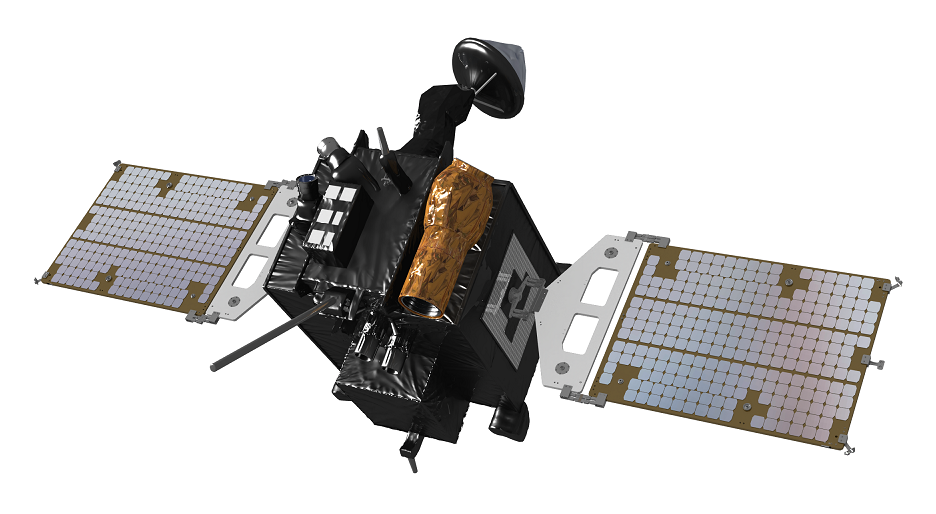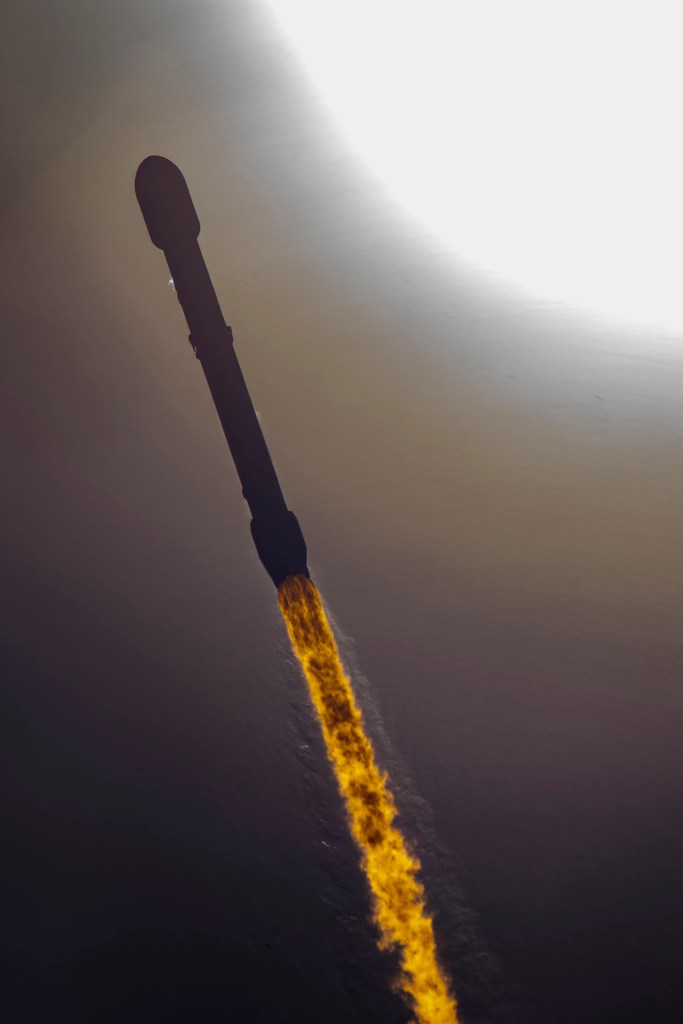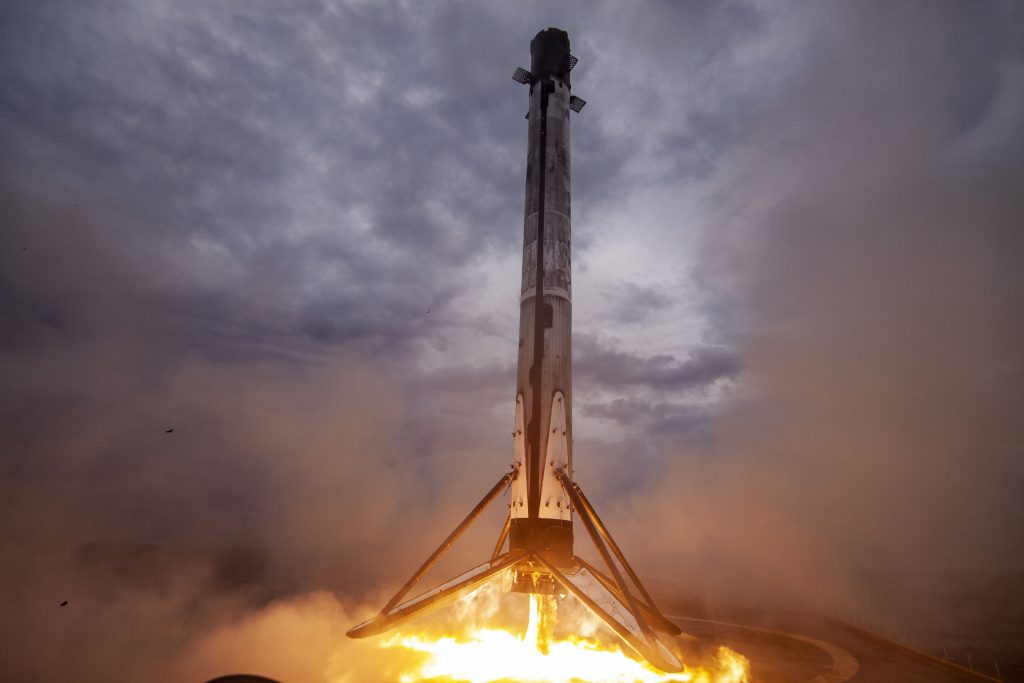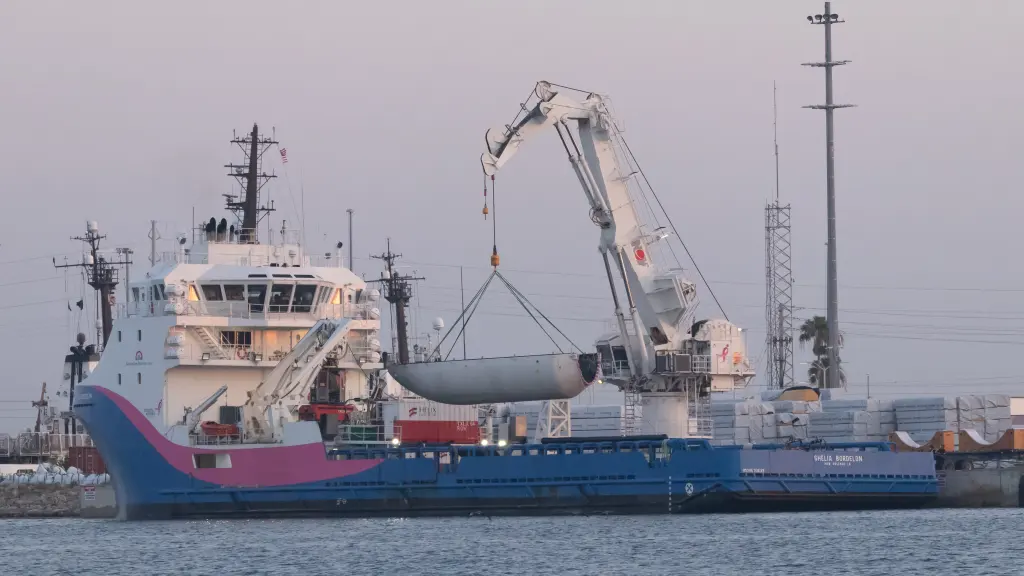Science
KPLO | Falcon 9 Block 5 – Everyday Astronaut

Featured image credit: SpaceX
Lift Off Time |
August 4, 2022 – 23:08 UTC | 19:08 EDT |
|---|---|
Mission Name |
KPLO, Korean Pathfinder Lunar Orbiter |
Launch Provider
|
SpaceX |
Customer
|
Korea Aerospace Research Institute |
Rocket |
Falcon 9 Block 5, B1052-6; 78.51 day turnaround time |
Launch Location |
Space Launch Complex 40 (SLC-40), Cape Canaveral Space Force Station, Florida, USA |
Payload mass |
~678 kg (~1,500 kg) |
Where did the satellite go? |
Trans Lunar Injection (Initial Orbit: 249 x 245 km orbit at 29.50 degrees) |
Did they attempt to recover the first stage? |
Yes |
Where did the first stage land? |
~640 km downrange on Just Read the Instructions
Tug: Kurt J Crosby; Support: Bob |
Did they attempt to recover the fairings? |
The fairing halves were recovered from the water ~730 km downrange by Bob |
Were these fairings new? |
No, both fairings are flight proven |
This was the: |
– 168th Falcon 9 launch – 106th Falcon 9 flight with a flight proven booster – 110th re-flight of a booster – 32nd re-flight of a booster in 2022 – 134th booster landing – 60th consecutive landing (a record) – 34rd launch for SpaceX in 2022 (a record) – 93rd SpaceX launch from SLC-40 – 97th orbital launch attempt of 2022 (94th successful) |
Where to watch |
Official Replay |
How Did It Go?
SpaceX successfully launched the Korean Pathfinder Lunar Orbit (KPLO) to lunar orbit atop a Falcon 9 Block 5. Lifting off from Space Launch Complex 40, at the Cape Canaveral Space Force Station, in Florida, the 678 kg spacecraft will explore lunar geography.
What Is KPLO?
The KPLO spacecraft was built and developed by the South Korean Korea Aerospace Research Institute (KARI) and is Korea’s first lunar spacecraft. With the goal of surveying lunar resources (such as ice, helium, uranium, silicon, aluminum, etc) as well as demonstrating Korea’s ability to build and operate a lunar spacecraft, KPLO is the first phase of their larger Korean Lunar Exploration Program (KLEP) plans.
Based on the hopeful success of KPLO, the second phase of KLEP comprises a lunar orbiter, lunar lander, and lunar rover. This mission is expected to launch in 2025.
KLPO Spacecraft
Roughly a month after launch, the KLPO satellite will reach a 100 km circular polar low-lunar orbit via the ballistic lunar capture method. To reach lunar orbit, the spacecraft has four main 30 N thrusters and four 5 N thrusters for attitude control. To remain in contact with the Earth, KLPO has S-band and X-band transponders that are powered by a 760-watt set of solar panels.
The satellite has six instruments:
Lunar Terrain Imager (LUTI). As the name implies, this instrument will be used to image the lunar surface and scout for future landing sites. The instrument has a ~5-meter resolution.
Wide-Angle Polarimetric Camera (PolCam). Polarimetry is used to analyze the composition of regolith from a distance. The PolCam will be used to investigate the entirety of the lunar regolith, with the exception of that on the poles.
KPLO Magnetometer (KMAG). As the name implies, this instrument will be used to measure the strength of the lunar poles.
KPLO Gamma Ray Spectrometer (KGRS). Using spectroscopy–the process of looking at emission gaps–this instrument will research the composition of the lunar regolith.
Delay-Tolerant Networking experiment (DTNPL)
NASA ShadowCam. NASA’s ShadowCam will search the lunar surface for evidence of large ice deposits.
Falcon 9 Block 5?
The Falcon 9 Block 5 is SpaceX’s partially reusable two-stage medium-lift launch vehicle. The vehicle consists of a reusable first stage, an expendable second stage, and, when in payload configuration, a pair of reusable fairing halves.
First Stage
The Falcon 9 first stage contains 9 Merlin 1D+ sea level engines. Each engine uses an open gas generator cycle and runs on RP-1 and liquid oxygen (LOx). Each engine produces 845 kN of thrust at sea level, with a specific impulse (ISP) of 285 seconds, and 934 kN in a vacuum with an ISP of 313 seconds. Due to the powerful nature of the engine, and the large amount of them, the Falcon 9 first stage is able to lose an engine right off the pad, or up to two later in the flight, and be able to place the payload into orbit successfully.
The Merlin engines are ignited by triethylaluminum and triethylborane (TEA-TEB), which instantly burst into flames when mixed in the presence of oxygen. During static fire and launch the TEA-TEB is provided by the ground service equipment. However, as the Falcon 9 first stage is able to propulsively land, three of the Merlin engines (E1, E5, and E9) contain TEA-TEB canisters to relight for the boost back, reentry, and landing burns.
Second Stage
The Falcon 9 second stage is the only expendable part of the Falcon 9. It contains a singular MVacD engine that produces 992 kN of thrust and an ISP of 348 seconds. The second stage is capable of doing several burns, allowing the Falcon 9 to put payloads in several different orbits.
For missions with many burns and/or long coasts between burns, the second stage is able to be equipped with a mission extension package. When the second stage has this package it has a grey strip, which helps keep the RP-1 warm, an increased number of composite-overwrapped pressure vessels (COPVs) for pressurization control, and additional TEA-TEB.


Falcon 9 Booster
The booster that supported the KPLO mission was B1052, which had supported five previous flights. Hence, its designation for this mission was B1052-6; this changed to B1052-7 upon successful landing.
| B1052’s missions | Launch Date (UTC) | Turn Around Time (Days) |
| Arabsat-6A | April 11, 2019 22:35 | N/A |
| STP-2 | June 25, 2019 06:30 | 74.33 |
| CSG-2 | January 31, 2022 23:11 | 951.70 |
| Starlink Group 4-10 | March 9, 2022 13:45 | 36.61 |
| Starlink Group 4-18 | May 18, 2022 10:59 | 69.88 |
| KPLO | August 4, 2022 23:08 | 78.51 |
Following stage separation, the Falcon 9 conducted two burns. These burns softly touched down the booster on SpaceX’s autonomous spaceport drone ship Just Read the Instructions.


Falcon 9 Fairings
The Falcon 9’s fairing consists of two dissimilar reusable halves. The first half (the half that faces away from the transport erector) is called the active half, and houses the pneumatics for the separation system. The other fairing half is called the passive half. As the name implies, this half plays a purely passive role in the fairing separation process, as it relies on the pneumatics from the active half.
Both fairing halves are equipped with cold gas thrusters and a parafoil which are used to softly touch down the fairing half in the ocean. SpaceX used to attempt to catch the fairing halves, however, at the end of 2020 this program was canceled due to safety risks and a low success rate. On KPLO, SpaceX attempted to recover the fairing halves from the water with their recovery vessel Doug.
In 2021, SpaceX started flying a new version of the Falcon 9 fairing. The new “upgraded” version has vents only at the top of each fairing half, by the gap between the halves, whereas the old version had vents placed spread equidistantly around the base of the fairing. Moving the vents decreases the chance of water getting into the fairing, making the chance of a successful scoop significantly higher.
An active Falcon 9 fairing half (Credit: Greg Scott)
” data-medium-file=”https://everydayastronaut.com/wp-content/uploads/2021/02/active_half-300×200.png” data-large-file=”https://everydayastronaut.com/wp-content/uploads/2021/02/active_half-1024×683.png” loading=”lazy” width=”1024″ height=”683″ data-id=”20240″ src=”https://everydayastronaut.com/wp-content/uploads/2021/02/active_half-1024×683.png” alt=”Falcon 9 Active Half” class=”wp-image-20240″ srcset=”https://everydayastronaut.com/wp-content/uploads/2021/02/active_half-1024×683.png 1024w, https://everydayastronaut.com/wp-content/uploads/2021/02/active_half-300×200.png 300w, https://everydayastronaut.com/wp-content/uploads/2021/02/active_half-768×512.png 768w, https://everydayastronaut.com/wp-content/uploads/2021/02/active_half-1200×800.png 1200w, https://everydayastronaut.com/wp-content/uploads/2021/02/active_half-380×253.png 380w, https://everydayastronaut.com/wp-content/uploads/2021/02/active_half-800×533.png 800w, https://everydayastronaut.com/wp-content/uploads/2021/02/active_half-1160×773.png 1160w, https://everydayastronaut.com/wp-content/uploads/2021/02/active_half.png 1500w” sizes=”(max-width: 1024px) 100vw, 1024px”>
Falcon 9 Passive fairing half (Credit: Greg Scott)
” data-medium-file=”https://everydayastronaut.com/wp-content/uploads/2021/02/passive_half-300×200.png” data-large-file=”https://everydayastronaut.com/wp-content/uploads/2021/02/passive_half-1024×683.png” loading=”lazy” width=”1024″ height=”683″ data-id=”20241″ src=”https://everydayastronaut.com/wp-content/uploads/2021/02/passive_half-1024×683.png” alt=”Falcon 9 Passive Half” class=”wp-image-20241″ srcset=”https://everydayastronaut.com/wp-content/uploads/2021/02/passive_half-1024×683.png 1024w, https://everydayastronaut.com/wp-content/uploads/2021/02/passive_half-300×200.png 300w, https://everydayastronaut.com/wp-content/uploads/2021/02/passive_half-768×512.png 768w, https://everydayastronaut.com/wp-content/uploads/2021/02/passive_half-1200×800.png 1200w, https://everydayastronaut.com/wp-content/uploads/2021/02/passive_half-380×253.png 380w, https://everydayastronaut.com/wp-content/uploads/2021/02/passive_half-800×533.png 800w, https://everydayastronaut.com/wp-content/uploads/2021/02/passive_half-1160×773.png 1160w, https://everydayastronaut.com/wp-content/uploads/2021/02/passive_half.png 1500w” sizes=”(max-width: 1024px) 100vw, 1024px”>
Half of the fairing being taken off Go. Navigator. (Credit: Lupi)
” data-medium-file=”https://everydayastronaut.com/wp-content/uploads/2020/04/Lupi_Fairing_Photo_2-300×225.jpg” data-large-file=”https://everydayastronaut.com/wp-content/uploads/2020/04/Lupi_Fairing_Photo_2-1024×768.jpg” loading=”lazy” width=”1024″ height=”768″ data-id=”13082″ src=”https://everydayastronaut.com/wp-content/uploads/2020/04/Lupi_Fairing_Photo_2-1024×768.jpg” alt class=”wp-image-13082″ srcset=”https://everydayastronaut.com/wp-content/uploads/2020/04/Lupi_Fairing_Photo_2-1024×768.jpg 1024w, https://everydayastronaut.com/wp-content/uploads/2020/04/Lupi_Fairing_Photo_2-300×225.jpg 300w, https://everydayastronaut.com/wp-content/uploads/2020/04/Lupi_Fairing_Photo_2-768×576.jpg 768w, https://everydayastronaut.com/wp-content/uploads/2020/04/Lupi_Fairing_Photo_2-1536×1152.jpg 1536w, https://everydayastronaut.com/wp-content/uploads/2020/04/Lupi_Fairing_Photo_2-1200×900.jpg 1200w, https://everydayastronaut.com/wp-content/uploads/2020/04/Lupi_Fairing_Photo_2-800×600.jpg 800w, https://everydayastronaut.com/wp-content/uploads/2020/04/Lupi_Fairing_Photo_2-400×300.jpg 400w, https://everydayastronaut.com/wp-content/uploads/2020/04/Lupi_Fairing_Photo_2-200×150.jpg 200w, https://everydayastronaut.com/wp-content/uploads/2020/04/Lupi_Fairing_Photo_2-260×195.jpg 260w, https://everydayastronaut.com/wp-content/uploads/2020/04/Lupi_Fairing_Photo_2-380×285.jpg 380w, https://everydayastronaut.com/wp-content/uploads/2020/04/Lupi_Fairing_Photo_2-1160×870.jpg 1160w, https://everydayastronaut.com/wp-content/uploads/2020/04/Lupi_Fairing_Photo_2.jpg 1920w” sizes=”(max-width: 1024px) 100vw, 1024px”>


KPLO Countdown
All times are approximate
| HR/MIN/SEC | EVENT |
|---|---|
| 00:38:00 | SpaceX Launch Director verifies go for propellant load |
| 00:35:00 | RP-1 (rocket grade kerosene) loading underway |
| 00:35:00 | 1st stage LOX (liquid oxygen) loading underway |
| 00:16:00 | 2nd stage LOX loading underway |
| 00:07:00 | Falcon 9 begins engine chill prior to launch |
| 00:01:00 | Command flight computer to begin final prelaunch checks |
| 00:01:00 | Propellant tank pressurization to flight pressure begins |
| 00:00:45 | SpaceX Launch Director verifies go for launch |
| 00:00:03 | Engine controller commands engine ignition sequence to start |
| 00:00:00 | Falcon 9 liftoff |
KPLO Launch, Landing, and Deployment
All times are approximate
| HR/MIN/SEC | EVENT |
|---|---|
| 00:01:12 | Max Q (moment of peak mechanical stress on the rocket) |
| 00:02:31 | 1st stage main engine cutoff (MECO) |
| 00:02:34 | 1st and 2nd stages separate |
| 00:02:42 | 2nd stage engine starts (SES-1) |
| 00:03:15 | Fairing deployment |
| 00:06:49 | 1st stage entry burn begins |
| 00:07:19 | 1st stage entry burn complete |
| 00:07:58 | 1st stage landing burn begins |
| 00:08:33 | 2nd stage engine cutoff (SECO) |
| 00:09:01 | 1st stage landing |
| 00:34:15 | 2nd stage engine restarts (SES-2) |
| 00:35:15 | 2nd stage engine cutoff (SECO-2) |
| 00:40:16 | KPLO deploys |
Science
Ancient plankton migration offers clues to future marine extinctions – Open Access Government


Researchers reveal new insights into how marine communities responded to extreme global warming events millions of years ago and how that informs our research today
The research teams from the University of Bristol, Harvard University, the University of Texas Institute for Geophysics, and the University of Victoria look at the potential impact of current and future climate change on marine ecosystems.
Past climate events
The research focused on the Early Eocene Climatic Optimum, a period about 66 million years ago known for its exceptionally high global temperatures, similar to the most severe global warming scenarios predicted today.
During this time, marine organisms, particularly plankton, faced unusual heat stress. The findings suggest that most marine communities, except for highly specialised species, migrated towards cooler regions to escape the tropical heat.
Dr Adam Woodhouse from the University of Bristol’s School of Earth Sciences, who led the study, explained the significance of these discoveries: “We knew that biodiversity amongst marine plankton groups has changed throughout the last 66 million years, but no one had ever explored it on a global, spatial, scale through the lens of a single database.”
Using the past to predict the future
The team used the Triton dataset developed by Dr. Woodhouse during his PhD to analyse global biodiversity changes over millions of years. By applying innovative network analysis techniques to micropalaeontology, they reconstructed global spatial changes in marine community structures across the Cenozoic era.
“The fossil record of marine plankton is the most complete and extensive archive of ancient biological changes available to science,” noted Dr. Woodhouse. “By applying advanced computational analyses to this archive we were able to detail the global community structure of the oceans since the death of the dinosaurs, revealing that community change often precedes the extinction of organisms.”
This study will hold importance for modern marine ecosystems; it is important to continue monitoring and researching. By using the new data, it will be easier to predict the impacts of climate change on marine biodiversity.
By expanding the research to other marine groups and incorporating new models, the team aims to use historical patterns to predict future changes in marine community structures under different warming scenarios.
Understanding how marine communities responded to ancient climate extremes provides insights into the resilience and vulnerability of modern ecosystems.
Editor’s Recommended Articles
Science
April 20: Why this Indigenous researcher thinks we can do science differently and more… – CBC.ca


Quirks and Quarks54:00Why this Indigenous researcher thinks we can do science differently, and more…
On this episode of Quirks & Quarks with Bob McDonald:
This researcher wants a new particle accelerator to use before she’s dead
Quirks and Quarks9:05This researcher wants a new particle accelerator to use before she’s dead
Physicists exploring the nature of reality need ever more capable particle colliders, so they’re exploring a successor to the Large Hadron Collider in Europe. But that new machine is at least decades away. Tova Holmes, an assistant professor at the University of Tennessee, Knoxville, is one of the physicists calling for a different kind of collider that can come online before the end of her career – or her life. This device would use a particle not typically used in particle accelerators: the muon.
Is venting the best way to deal with anger? The scientist says chill out.
Quirks and Quarks6:51Is venting the best way to deal with anger? The scientist says chill out
It turns out that acting out your anger might not be the best way to get rid of it. Sophie Kjaervik, a researcher at Virginia Commonwealth University in Richmond, Va., analyzed 154 studies of the different ways to deal with anger. Her results, published in the journal Clinical Psychology Review, suggest that techniques that reduce your heart rate and calm your mind are more effective than blowing off steam.
High intensity wildfires may release toxic forms of metals
Quirks and Quarks8:37High intensity wildfires may release toxic forms of metals
Wildfire smoke might be more dangerous than you think. A recent study in the journal Nature Communications found that when wildfires pass over soils or rocks rich in a normally harmless metal called chromium, it is transformed into a toxic form. The hotter and more intense the wildfire is, the more of this metal becomes toxic. Scott Fendorf, an Earth system science professor at Stanford University, said this study shows we should factor in the type of geology wildfires pass over to provide more targeted air quality warnings about smoke risks.
AI might help solve the problem of runaway conspiracy theories
Quirks and Quarks7:35AI might help solve the problem of runaway conspiracy theories
Conspiracy theories seem to have multiplied in the internet era and so far, we haven’t had much luck in debunking these beliefs. The preliminary findings of a new study on PsyArXiv, a site for psychology studies that have yet to be peer-reviewed, suggests that artificial intelligence may have more success. Thomas Costello, a postdoctoral psychology researcher at MIT was the lead author on this study, and said their findings can provide a window into how to better debunk conspiracy beliefs.


An Indigenous scientist explores the medicine the Earth needs
Quirks and Quarks19:12An Indigenous ecologist on why we need to stop and listen to save the planet
Earth day is April 22. And Earth is not in great shape to celebrate the day. Overheated, overpopulated, overexploited – we’re not being particularly careful with our planet. We talk to Indigenous ecologist Jennifer Grenz of the University of British Columbia about her new book, which is part memoir, part prescription for the medicine our planet needs – a compound of science and traditional wisdom. Her book is Medicine Wheel for the Planet: A journey toward personal and ecological healing.
READ MORE: An Indigenous ecologist on why we need to stop and listen to save the planet


Science
Dragonfly: NASA greenlights most important mission of the century – Earth.com


In a remarkable development, NASA has given the green light to the Dragonfly mission, a revolutionary rotorcraft designed to investigate the complex chemistry of Saturn‘s moon Titan.
This confirmation allows the mission to proceed with the final design, construction, and testing of the spacecraft and its scientific instruments.
Deciphering the prebiotic chemistry on Titan
The Dragonfly mission, led by Dr. Melissa Trainer of NASA’s Goddard Space Flight Center, will carry a cutting-edge instrument called the Dragonfly Mass Spectrometer (DraMS).
This powerful tool will help scientists delve into the intricate chemistry at work on Titan, potentially shedding light on the chemical processes that led to the emergence of life on Earth, known as prebiotic chemistry.
“We want to know if the type of chemistry that could be important for early pre-biochemical systems on Earth is taking place on Titan,” explains Dr. Trainer, a planetary scientist and astrobiologist specializing in Titan.
Titan: Dragonfly’s target
Titan, the largest moon of Saturn, is shrouded in a dense nitrogen-rich atmosphere, bears a striking resemblance to Earth in many ways. With a diameter of 5,150 kilometers, Titan is the second-largest moon in our solar system, surpassed only by Jupiter’s Ganymede.
Dense atmosphere and unique climate
One of Titan’s most distinctive features is its thick atmosphere, which is composed primarily of nitrogen and methane. This dense atmosphere creates a surface pressure 1.5 times higher than Earth’s, making it the only moon in our solar system with a substantial atmosphere.
The presence of methane in Titan’s atmosphere leads to a fascinating hydrological cycle, similar to Earth’s water cycle, but with methane as the primary liquid.
Titan’s surface is dotted with numerous lakes and seas of liquid hydrocarbons, predominantly methane and ethane. These liquid bodies, some of which are larger than the Great Lakes on Earth, are the result of Titan’s unique climate and atmospheric conditions.
The Cassini mission, which explored the Saturn system from 2004 to 2017, provided stunning images and data of these extraterrestrial lakes and seas.
Dragonfly mission to search Titan for prebiotic chemistry and life
The complex chemistry occurring on Titan’s surface and in its atmosphere has drawn significant attention from astrobiologists.
With its abundant organic compounds and the presence of liquid methane, Titan is considered a prime candidate for studying prebiotic chemistry and the potential for life to emerge in environments different from Earth.
Beneath Titan’s icy crust lies another intriguing feature: a global subsurface ocean of liquid water and ammonia. This ocean, which is believed to be salty and have a high pH, may potentially host microbial life.
The presence of this subsurface ocean, along with the unique chemistry on Titan’s surface, makes this moon a fascinating target for future exploration and scientific research.
Pushing the boundaries of rotorcraft exploration
Nicky Fox, associate administrator of the Science Mission Directorate at NASA Headquarters, emphasized the significance of the Dragonfly mission, stating, “Exploring Titan will push the boundaries of what we can do with rotorcraft outside of Earth.”
Titan’s unique characteristics, including its abundant complex carbon-rich chemistry, interior ocean, and past presence of liquid water on the surface, make it an ideal destination for studying prebiotic chemical processes and the potential habitability of an extraterrestrial environment.
Innovative design and cutting-edge technology
The Dragonfly robotic rotorcraft will leverage Titan’s low gravity and dense atmosphere to fly between different points of interest on the moon’s surface, spanning several miles apart.
This innovative approach allows the entire suite of instruments to be relocated to new sites once the previous one has been thoroughly explored, providing access to samples from diverse geological environments.
DraMS, developed by the same team responsible for the Sample Analysis at Mars (SAM) instrument suite aboard the Curiosity rover, will analyze surface samples using techniques tested on Mars.
Dr. Trainer emphasized the benefits of this heritage, stating, “This design has given us an instrument that’s very flexible, that can adapt to the different types of surface samples.”
Dragonfly mission challenges and funding
The Dragonfly mission successfully passed its Preliminary Design Review in early 2023. However, due to funding constraints, the mission was asked to develop an updated budget and schedule.
The revised plan, presented and conditionally approved in November 2023, hinged on the outcome of the fiscal year 2025 budget process.
With the release of the president’s fiscal year 2025 budget request, Dragonfly is now confirmed with a total lifecycle cost of $3.35 billion and a launch date set for July 2028.
This reflects a cost increase of approximately two times the initially proposed cost and a delay of more than two years from the original selection in 2019.
Despite the challenges posed by funding constraints, the COVID-19 pandemic, supply chain issues, and an in-depth design iteration, NASA remains committed to the Dragonfly mission.
Additional funding has been provided for a heavy-lift launch vehicle to shorten the mission’s cruise phase and compensate for the delayed arrival at Titan.
Rigorous testing and validation
To ensure the success of the Dragonfly mission, researchers on Earth have conducted extensive testing and validation of the designs and models for the nuclear-powered, car-sized drone.
The mission team has carried out test campaigns at NASA’s Langley Research Center, utilizing the Subsonic Tunnel and the Transonic Dynamics Tunnel (TDT) to validate computational fluid dynamics models and gather data under simulated Titan atmospheric conditions.
Ken Hibbard, Dragonfly mission systems engineer at APL, emphasized the importance of these tests, stating, “All of these tests feed into our Dragonfly Titan simulations and performance predictions.”
As the Dragonfly mission progresses, it marks a new era of exploration and scientific discovery. Dr. Trainer expressed her excitement, saying, “Dragonfly is a spectacular science mission with broad community interest, and we are excited to take the next steps on this mission.”
Turning science fiction into fact with the Dragonfly mission
In summary, the Dragonfly mission embodies the essence of human curiosity and the relentless pursuit of knowledge. As NASA prepares to send this revolutionary rotorcraft to the alien world of Titan, we stand on the brink of a new era of exploration and discovery.
With its innovative design, cutting-edge technology, and the unwavering dedication of the mission team, Dragonfly will unlock the secrets of prebiotic chemistry and shed light on the potential for life beyond Earth.
As we eagerly await the launch of this titanic mission, we can only imagine the wonders that await us on Saturn’s enigmatic moon. The Dragonfly mission is a testament to the indomitable human spirit and our boundless capacity to push the frontiers of knowledge.
In the words of Ken Hibbard, “With Dragonfly, we’re turning science fiction into exploration fact,” and that fact will undoubtedly inspire generations to come.
—–
Like what you read? Subscribe to our newsletter for engaging articles, exclusive content, and the latest updates.
Check us out on EarthSnap, a free app brought to you by Eric Ralls and Earth.com.
—–
-
Media22 hours ago
DJT Stock Rises. Trump Media CEO Alleges Potential Market Manipulation. – Barron's
-
Investment23 hours ago
Private equity gears up for potential National Football League investments – Financial Times
-
Real eState15 hours ago
Botched home sale costs Winnipeg man his right to sell real estate in Manitoba – CBC.ca
-
News21 hours ago
Canada Child Benefit payment on Friday | CTV News – CTV News Toronto
-
Business23 hours ago
Gas prices see 'largest single-day jump since early 2022': En-Pro International – Yahoo Canada Finance
-
Business15 hours ago
Dow Jones Rises But S&P, Nasdaq Fall; Nvidia, SMCI Flash Sell Signals As Bitcoin's Fourth Halving Arrives – Investor's Business Daily
-



 Science20 hours ago
Science20 hours agoMarine plankton could act as alert in mass extinction event: UVic researcher – Langley Advance Times
-
Media23 hours ago
Three drones downed after explosions heard in Iran’s Isfahan: State media – Al Jazeera English





